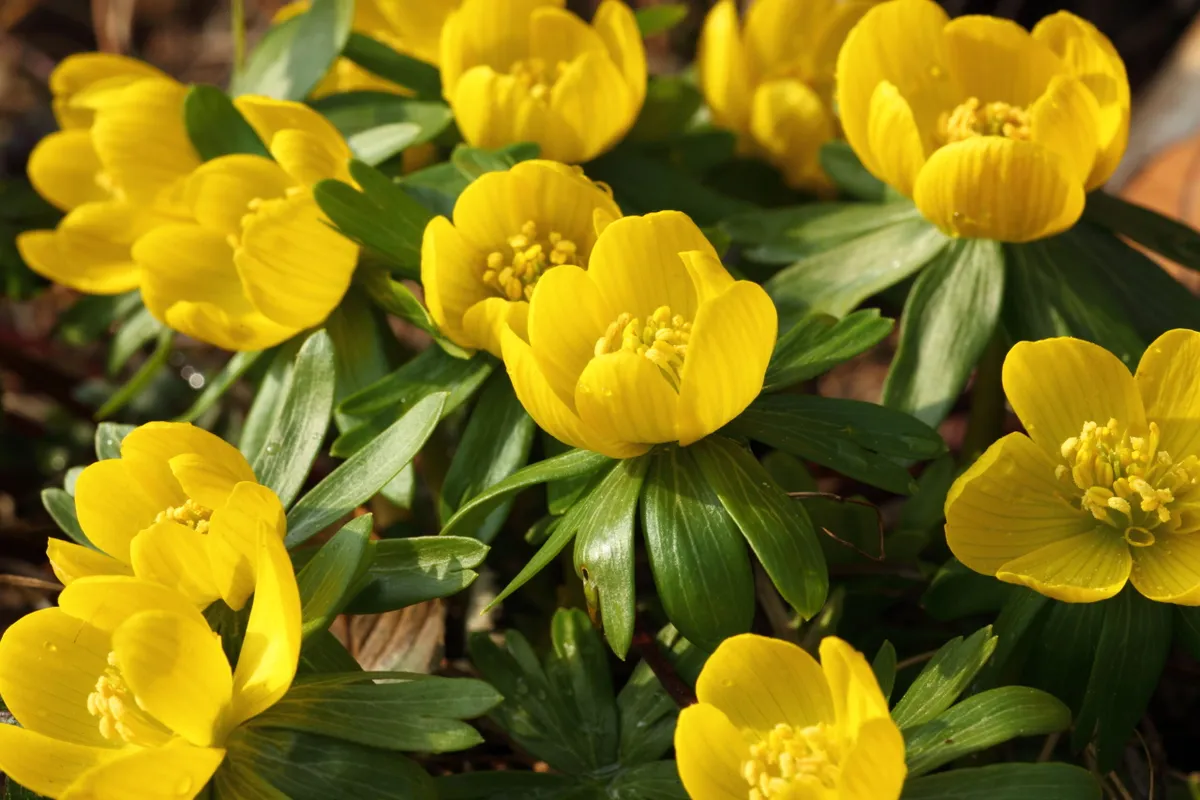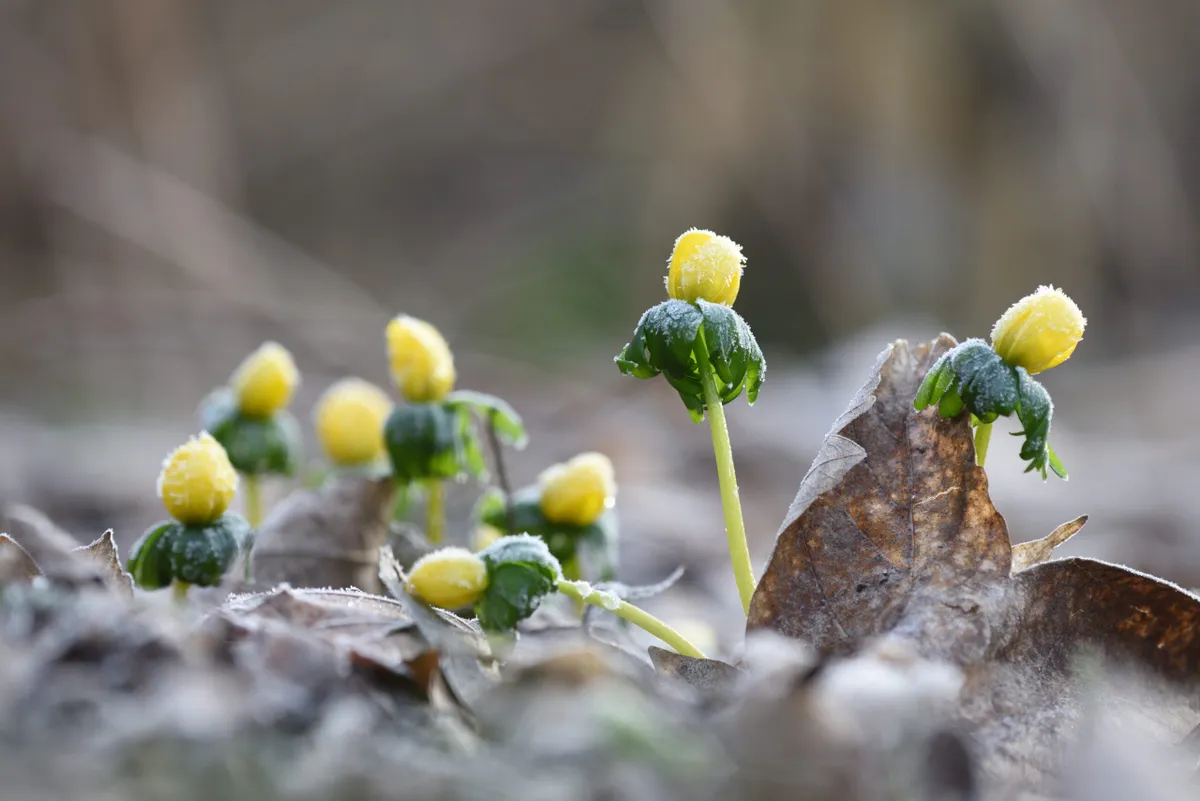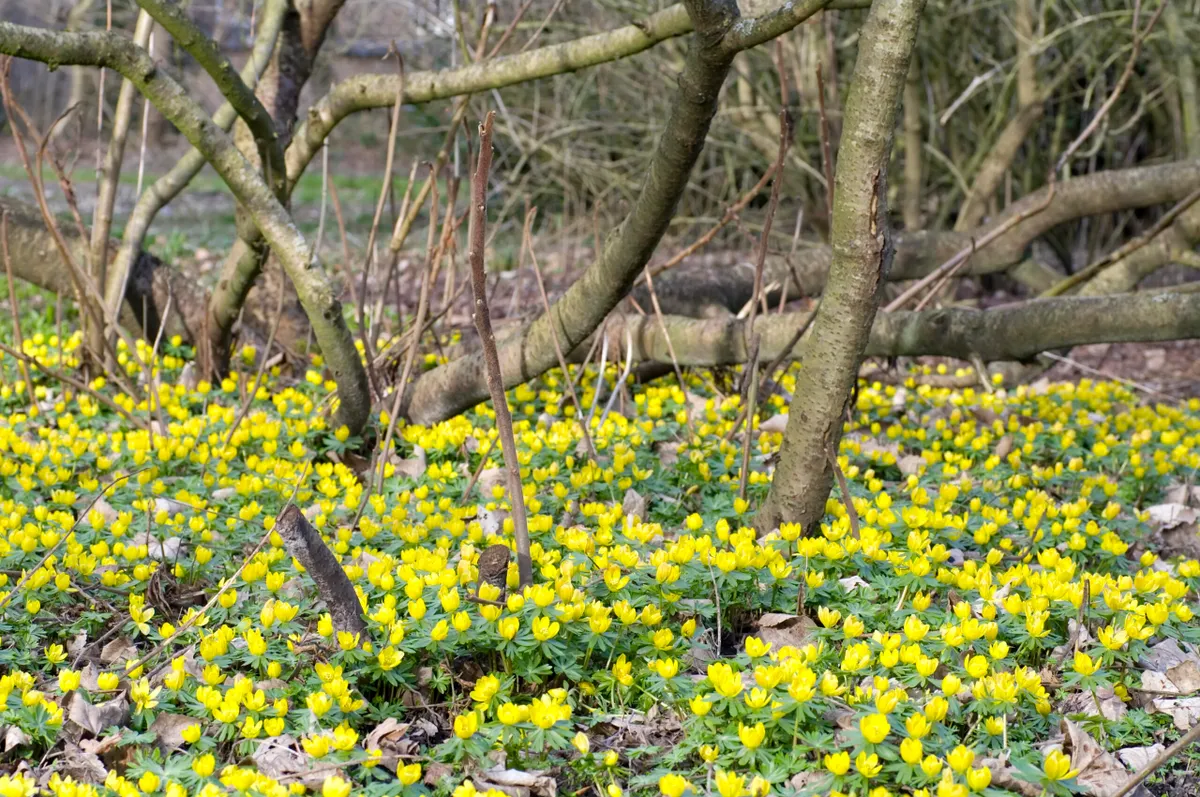With golden goblets held above ruffs of green bracts, winter aconites are an eagerly anticipated forerunner of spring, brightening the drab days of late winter. When conditions are right they will seed freely, producing expanding carpets of yellow flowers every year.
Find out the best winter aconites to grow in the February 2024 issue of Gardens Illustrated on newsstands from 1 February
In its normal form, Eranthis hyemalis has bright-yellow flowers, opening in sunshine to about 3cm across, when their brightness becomes a wonderful antidote to winter drabness. Numerous named cultivars have appeared in recent decades, perhaps in parallel with the rise of interest in snowdrops, with which they associate so well.
Jump to
- How to grow winter aconites
- Where to plant winter aconites
- How to propagate winter aconites
- Do winter aconites suffer from disease?
- What to plant winter aconites with
- Where to see and buy winter aconites

What are winter aconites?
Winter aconites are small tuberous perennials, growing as spring ephemerals. The genus is made up of 12 species, three of which have yellow flowers, while the rest have white. Their season of interest is late winter to early spring, and they prefer to grow in well-drained soil with plenty of light in winter. The most commonly available varieties are hardy throughout the UK (hardiness rating of RHS H6, USDA 4a-9b) and reach a height and spread of approx. 10cm x 10cm.
The central European winter aconite, Eranthis hyemalis, is what most people understand as an aconite – a low-growing tuberous plant with deeply lobed rounded leaves and bracts of vibrant green, surrounding rounded, yellow, buttercup-like flowers. The other plant commonly called aconite, Aconitum, is the summer flowering monkshood.
When do winter aconites flower?
Appearance time depends on the season, but in a normal, not-too-cold winter they are usually in full flower in lowland Britain by late January, continuing well into February, and provide a very welcome source of nectar and pollen for early bees.
Unlike snowdrops and other bulbs with shoots that spear out of the ground, winter aconites shoulder their way up, with the flowering stem forming an arch, the top of which breaks the surface first. As it emerges, it straightens out and pulls up the bud at its tip, protected from this treatment by a ring of bracts. Rather like a butterfly spreading its wings, the bracts and bud quickly expand into a green ruff surrounding the yellow flower.
You might also like:
The best snowdrops for your garden
Yellow snowdrops
The best places to see snowdrops
How to grow winter aconites

Where to plant winter aconites
Ideal conditions seem to be light well-drained loam that’s alkaline to neutral, without too much competition from dense vegetation. Sparse grass under deciduous trees is an ideal growing location, so long as there’s plenty of light in spring – winter aconites go dormant as the canopy develops, and the next you’ll see of them is their stems heaving out of the ground in January. Where winter aconites thrive they can spread over wide areas and form golden carpets.
How to plant winter aconites
Winter aconites that are sold as dry tubers by bulb merchants tend to be E. cilicica. They don’t like becoming desiccated, so get them as early as possible and soak in water for 24 hours before planting. Even so, success may be low. It’s preferable to source growing plants in spring.

How to propagate winter aconites
To propagate from seed, look for a ring of capsules ripening above the bracts, usually in early May. Watch for the capsules opening at their tips and move fast. Sow the seed immediately as it doesn’t stand desiccation. Cultivars can be sown in gritty compost in pots left to stand outside, or seed can be broadcast to new areas by hand – or just cut plants down with a strimmer. In the first year, the only growth is a pair of green cotyledons, followed in subsequent years by single leaves, until flowering size is reached in about the fourth year. Plant in the garden once they’re large enough to handle.
You can also divide tubers of established plants. As they increase in size, they produce a mix of flowering stems and leaves. The tuber elongates and branches and is easy to divide, simply snapping pieces apart and carefully replanting the divisions. It’s easiest to do it ‘in the green’ while the plants are visible, and unlike snowdrops they take no harm from this, but division in dormancy is fine too, if you can find the tubers. If it’s dry at the time, keep them well-watered. The tubers should be about 3-5cm deep.

Do winter aconites suffer from disease?
The most dangerous disease for Eranthis is Urocystis eranthidis, also known as Eranthis smut, a fungal disease that forms open pustules of black spores on the stems and ultimately weakens the plants. If symptoms appear, it is best to remove these plants. Other fungal diseases can occur but are less damaging.
What to plant winter aconites with
Snowdrops are the obvious plants to associate with Eranthis. They consistently appear from early January (this winter I spotted some on 27 December) and the white and gold combination is a classic of the winter garden. For a really glorious effect plant them with richest pink Cyclamen coum – February needs all the bling it can get.
You might also like:
Why you should buy snowdrops in the green
How to grow snowdrops
How to propagate snowdrops
Where to see and buy winter aconites
- Anglesey Abbey Quy Road, Lode, Cambridge CB25 9EJ. Tel 01223 810080, nationaltrust.org.uk
- Avon Bulbs Burnt House Farm, Mid Lambrook, South Petherton, Somerset TA13 5HE. Tel 01460 242177, avonbulbs.co.uk
- Cambo Estate Kingsbarns, St Andrews, Fife KY16 8QD. Tel 01333 450054, camboestate.com
- Colesbourne Gardens Colesbourne, nr Cheltenham, Gloucestershire GL53 9NP. Tel 01242 870567, colesbournegardens.org.uk
- Monksilver Nursery Oakington Road, Cottenham, Cambridge CB24 8TW. Tel 01954 251555, monksilvernursery.co.uk